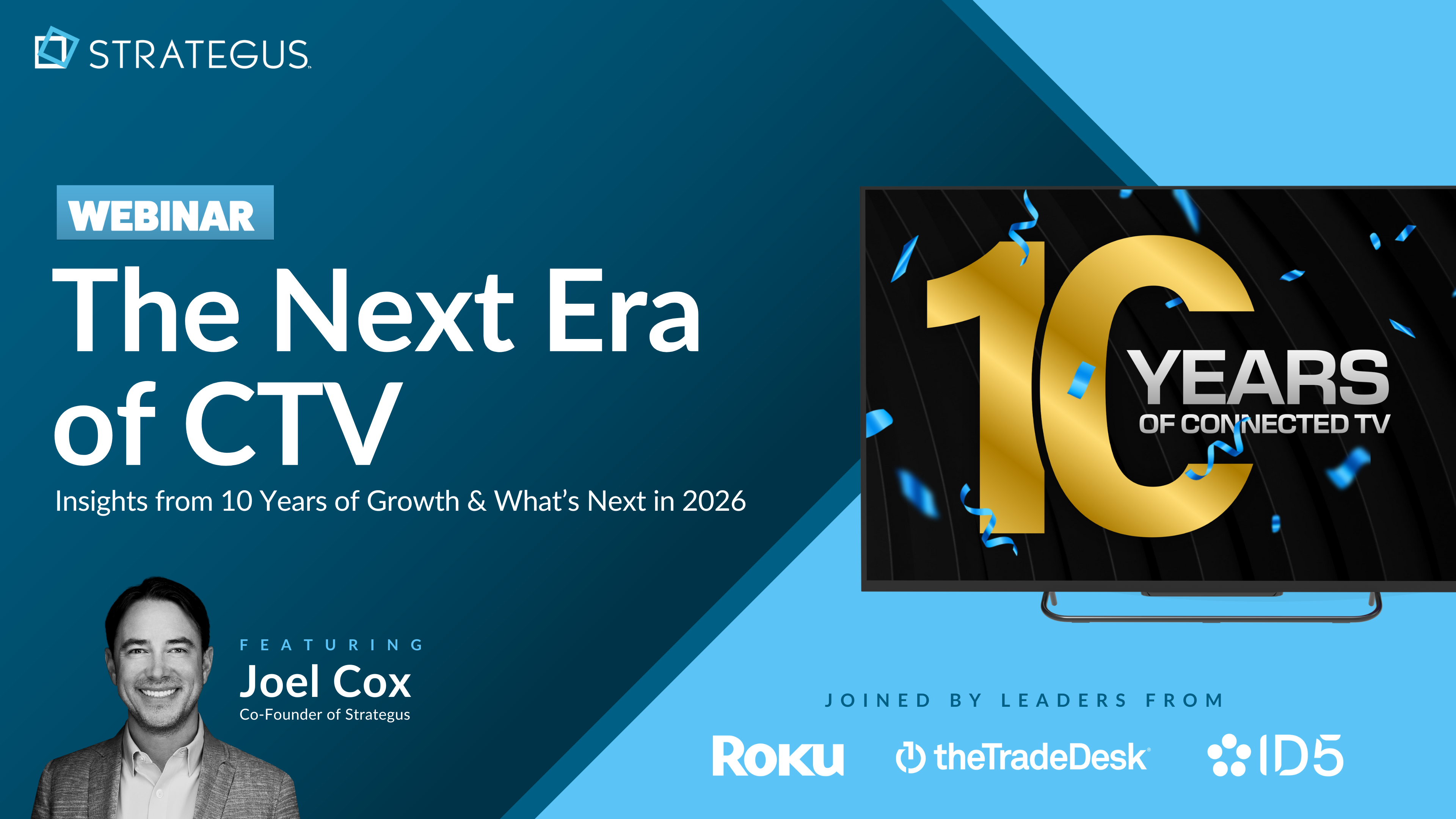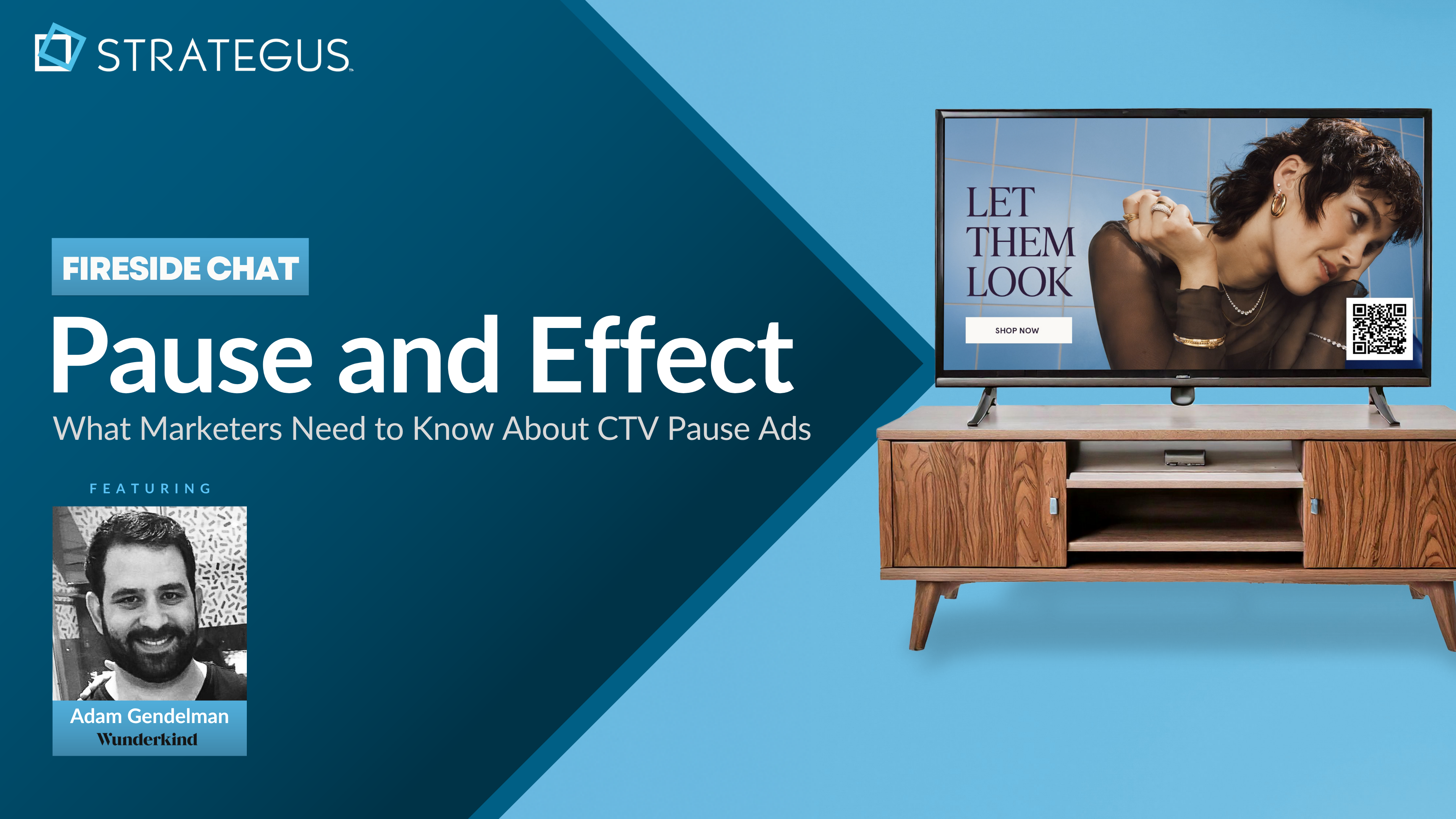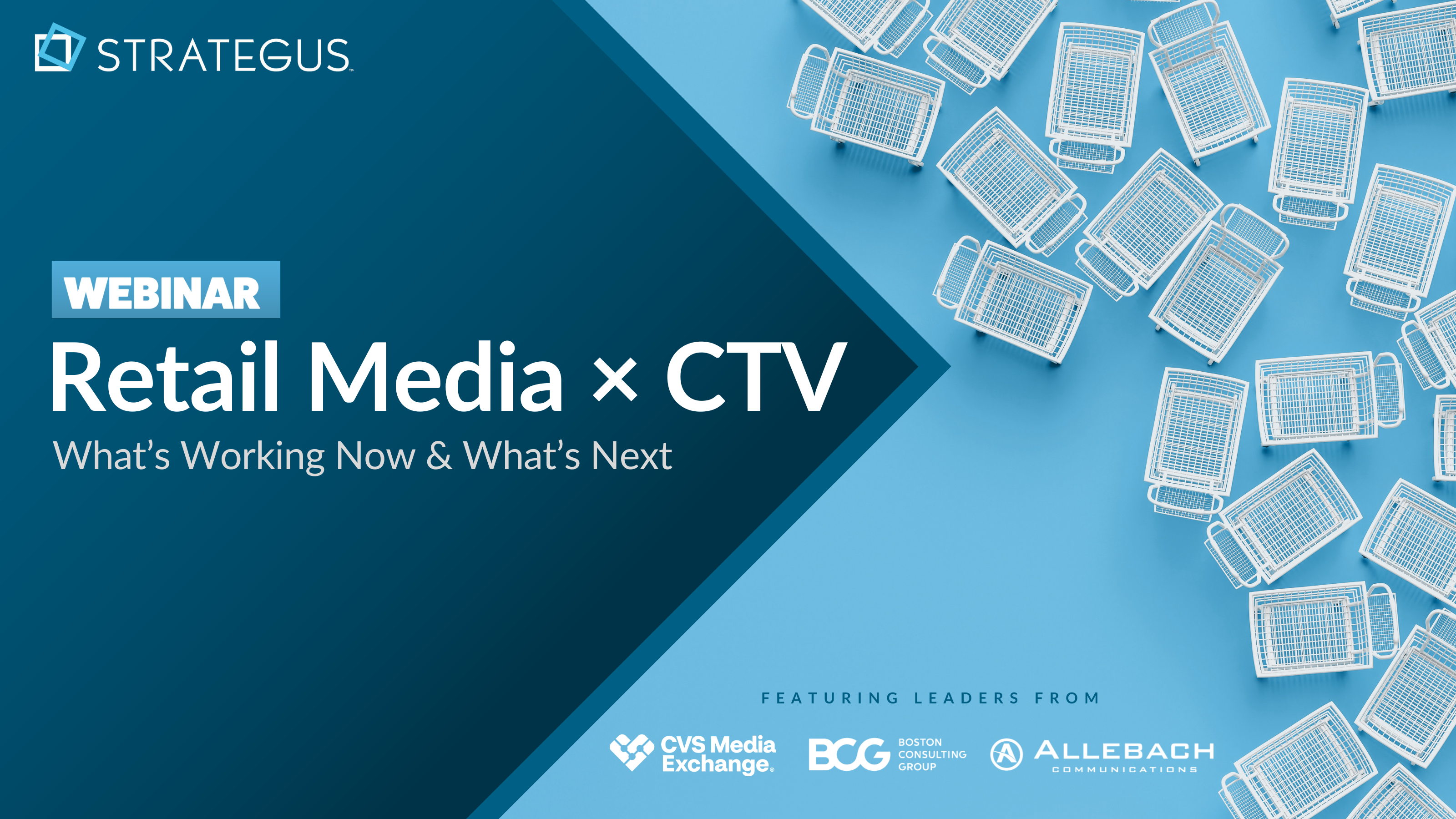- Home
- Strategus Blog
- 3 Ways Video on Demand Is Creating Opportunity for Advertisers
3 Ways Video on Demand Is Creating Opportunity for Advertisers
 Andy Dixon
Andy Dixon
7 minutes read

In the realm of advertising, shifts in best practices, new trends, and constant change, are all to be expected. Over the past half decade, marketers have observed the transition from traditional television over to digital as more and more consumers “cut the cord” in favor of streaming services. The onset of the COVID-19 pandemic has only accelerated this trend, with AVOD (advertising-based video on demand) – also referred to as FAST (free ad-supported TV) – platforms seeing strong growth in ad revenue beginning Q2 2020.
Advertising-based video on demand references the category of streaming services that provide content for free or at a low price point in exchange for interrupting shows and movies with periodic video ads. With the pandemic relegating many people to their homes, the combination of economic uncertainty coupled with limited entertainment options is creating a unique shift in consumer behavior.

Individuals are finding themselves spending more time in front of the television than ever before, and as popular streaming services like Netflix become increasingly saturated and are increasing their prices, viewers are turning to more cost-efficient AVOD options.
The growth of the advertising-based video on demand market is great news for advertisers. Instead of relying on assumption and anecdote to get in front of an ideal audience, marketers are able to reach the viewers with ease. This “pivot” away from ad-free subscription services (e.g. Netflix) towards AVOD is actually not new. Fascinatingly enough, it’s a return to the old stomping grounds many advertisers are familiar with.
How Does the Shift to AVOD Services Benefit Advertisers?
1. Ad revenues are growing YoY for AVOD
Between five of the major ad-supported streaming platforms (Roku, Hulu, Peacock, Pluto TV, and Tubi), the year-over-year ad revenue shot up 31 percent in 2020, a trend that is expected to hold. To fully capitalize on what’s happening, it’s important for marketers to understand why this growth in AVOD ad revenues is taking place.
- Saturation — The digital streaming space is becoming increasingly saturated with major media players all seemingly launching new services. HBOMax and Disney+ were both released within the past 12 months. With so many different services competing for the consumer’s subscription, it is unlikely that a viewer will subscribe to multiple services. This presents an issue for the SVOD (subscription-based video on demand) model, paving way for AVOD to take the lead.
- Live Programming — Ad-supported video on demand services like Roku Channel or Pluto TV have the capacity to feature live programming for both national and local news. This is a differentiating advantage that sets it apart from most SVOD services. As we delve into times of uncertainty, AVOD will likely see sizable lifts in usage and streaming hours with consumers looking to tune into current events.
As viewers experience subscription fatigue and willingly turn to AVOD services, we can expect an audience that is more engaged and readily prepared for ad campaigns. With the right tactics, advertisers can anticipate higher conversions and attributions with a lower average spend.
2. OTT/CTV advertising can drive leads
When we discuss AVOD ad revenues, we are inherently referencing OTT and CTV advertising. As an overview, OTT (over-the-top) is the term used to describe all media which is delivered through the internet, as opposed to conventional cable or satellite. In order to access any OTT content, an internet-supported device is necessary. In the case of OTT video (which includes content from AVOD services), it is most optimal to view on a smart/connected TV (CTV) versus a mobile device or laptop.
For marketers and media buyers, it is best to approach AVOD in the context of OTT/CTV advertising in order to drive leads. There are several advantages exclusive to CTV advertising that should be leveraged when planning your next AVOD campaign:
- Ads are non-skippable on AVOD streaming services
- Internet-connected TV ads are nearly 100% viewable
- The audience is already actively engaged and less likely to leave when an ad campaign runs
- OTT and CTV ads are more easily targeted to desired consumers compared to traditional TV
- Sophisticated data points allow for retargeting only to viewers that have watched the ad to completion
With the amount of data available for OTT/CTV advertising, advertisers have concise information to work with and can be highly selective with their ad budget. By targeting and retargeting only to engaged individuals, the leads are of higher quality with a better likelihood of converting or taking action. With proper reporting and performance attribution, AVOD advertising can be a consistent ‘win’ for your clients.
3. Advertising-Based Video on Demand offers the ability to hyper target
In the last decade, we’ve witnessed a slow acceptance of brands leveraging personalized data to market to consumers. From physical location to online behavior to hobbies and affiliations, there are so many data points available that can be readily used. Unlike traditional TV advertising where targeting was limited to age, gender, and location, advertising on AVOD services allows opportunity to hyper target to an exact, ideal audience. This is a game changer.
Instead of casting a wider net with hopes of capturing the target audience within it, advertisers can hyper target individuals in a number of ways. This is one of the most powerful advantages that come with the shift to digital streaming. Not utilizing any of the following would be the equivalent of leaving money on the table:
- Behavioral Targeting – targeting audiences based on interests, hobbies, online activities, lifestyle, etc.
- Contextual Targeting – targeting audiences based on viewing history e.g. sports, comedy, outdoor shows vs. sports, action, thrillers
- Time of Day Targeting – targeting individual audiences at different times of day, based on when they are most active
- Technographic Targeting – targeting audiences based on device characteristics i.e. hardware, operating system, connection speed, etc.
- Traditional Geographic Targeting – cities, zip codes, DMA’s, etc. are still alive and well in CTV targeting
- Real-Time GPS-Based Geographic Targeting – targeting audiences based on their real-time location and/or where they physically go on a regular basis. We believe that where people are willing to go in the physical world is more valuable than what they visit in their browsers. You can even target people that are willing and able to go out in the world during the COVID pandemic, learn more in this post.
- Demographic Targeting – targeting audiences based on objective data points i.e. hometown, income, education level, etc.
- Automatic Content Recognition (ACR) Targeting – targeting audiences based on the program viewing habits on their CTV, this can be what they have historically watched or if they are currently watching a particular program/special that might be too expensive to access normally (think American Idol, Super Bowl, Masters, Wimbledon, etc.) you can use this to target them after on their CTVs or even during on the other devices in the home.
- Purchasing Targeting – targeting audiences based on their historical spending habits and/or large purchase intent (credit-applications). Purchase history can be narrowed down to specific brands in most cases
- First-Party Data/CRM Activation/Lookalike Audiences – in this targeting scenario, you can take an existing database of past and/or current customers and target just them with a hyper-focused spend. The same applies to taking the ideal customers from your first-party data and doing lookalike audiences to expand reach beyond the existing pool
The Bottom Line
When there is change, there is opportunity — especially for the individuals who adapt quickly and stay ahead of the competition. The unprecedented circumstances brought about by the global pandemic have created a new shift towards AVOD services. While this trend is steadily growing, it has yet to become hyper saturated, which indicates that there is room for advertisers to lead the charge. Strategus has made it simple to take action with this article of best practices.
As this space continues to evolve and grow, the industry will adjust accordingly. The advertisers that will thrive through the various transformations are the ones that can keep up with the rapid shifts, which is a lot easier said than done. If you have any questions on any aspect of AVOD, OTT, or CTV advertising, contact us for insight from our team of experts.


Andy Dixon is a seasoned Content Writing Specialist at Strategus, renowned for his expertise in creating engaging and impactful digital content. With over a decade of experience in content creation, Andy has honed his skills in a variety of niches, ranging from technology and marketing to education.
Strategus is a managed services connected TV(CTV) advertising agency with over 60,000+ campaigns delivered. Find out how our experts can extend your team and drive the result that matter most.
Talk to an Expert
Seeking a Custom CTV Strategy That Delivers?
What to read next
App Event Tracking: Tie Mobile App Activity to CTV Campaigns
Let’s say you’re running a CTV campaign for a personal finance app.
5 minutes read

Stop Guessing Who Your Audience Is — Let Their Apps Tell You
Connected TV (CTV) targeting often falls in one of two camps.
8 minutes read
See Who Bought After Your Ad + How Much They Spent
You can’t improve what you can’t measure. And for years, that’s been a major problem with TV advertising.
4 minutes read

First-Party Attribution: Match Ads to Sales With CRM Data
The value of first-party data continues to grow.
7 minutes read













